The combo of lime and sunshine can cause blisters
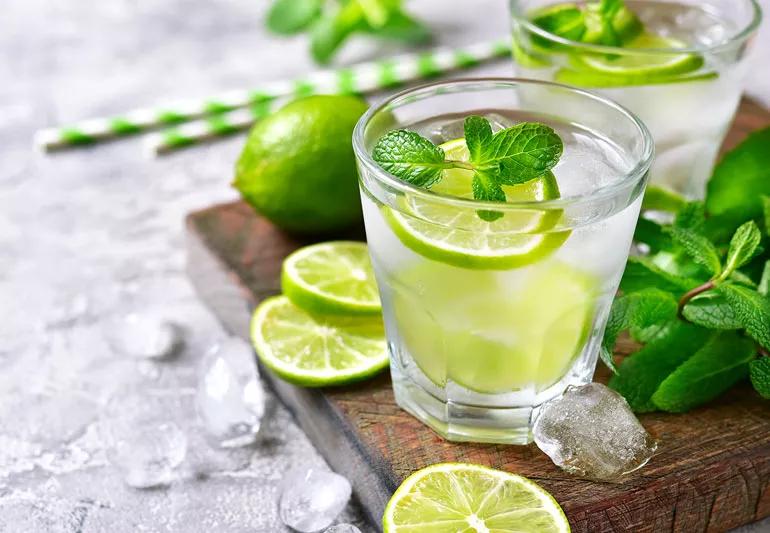
Next time you’re sipping margaritas on the patio, be extra careful when squeezing that fresh lime into your drink. The parts of your skin that’ve been exposed to both the fruit and sun may be vulnerable to a margarita burn. Medically speaking, a margarita burn is known as phytophotodermatitis, and it’s a form of extreme sunburn.
Advertisement
Cleveland Clinic is a non-profit academic medical center. Advertising on our site helps support our mission. We do not endorse non-Cleveland Clinic products or services. Policy
What does this mouthful of a term mean? Here’s a breakdown:
Phytophotodermatitis, then, is the skin’s exaggerated response to the sun, resulting in light-to-severe blistering that may look like sun poisoning or a rash.
Dermatologist Melissa Piliang, MD, explains that some plants and fruits — especially citrus fruits — contain furocoumarins, an organic chemical compound that can make skin more sensitive to the sun and worsen the effects of sunburn.
“Typically, phytophotodermatitis is a topical reaction, where you’ve spilled something on yourself,” she says, “but it can also happen from eating celery soup, as celery contains furocoumarins.”
A subset of phytophotodermatitis is known as “berloque dermatitis,” a 1920s reference to the fact that it frequently affected people who wore perfumes and colognes containing bergamot oil, which is derived from furocoumarin-containing oranges.
Other foods that can lead to phytophotodermatitis include:
Advertisement
“I commonly see phytophotodermatitis when somebody has been barbecuing on a sunny afternoon and having drinks with limes in them, like margaritas or beers with a lime squeezed in,” Dr. Piliang says. “Anything where they’re cutting and squeezing limes and splashing the juice on themselves and then enjoying the sunshine.”
Dr. Piliang recalls a time when a patient had a poison ivy-like rash on the top of their forearms after mowing the lawn. Turns out, they’d been making guacamole beforehand, and some of the lime had gotten onto their skin before they went outside.
Fair-skinned folks and those who are typically sensitive to the sun are at higher risk for phytophotodermatitis, while individuals with darker skin don’t usually see such reactivity.
Hospitality industry, beware: Chefs, bartenders and others who work with food may be more exposed to foods containing furocoumarins, especially when serving on patios, working at pool bars and the like.
And because plenty of wild plants contain furocoumarins, hikers, bikers and other outdoorsy types may also be more vulnerable to exposure.
Margarita burns can be difficult to identify because of their similarity in appearance to other skin rashes brought on by phototoxic exposure. Often, the diagnosis of phytophotodermatitis is dependent on knowing the history of what was happening in the hours and days leading up to the first sign of a burn.
You can get a margarita burn on your hands, lips or face, and it usually shows up in strange formations like streaks, splotches or even handprints.
The signs of a margarita burn might not kick in immediately after you’ve been in the sun. In 24 to 48 hours, your skin might start to feel tingly and tender and begin to redden. Within another day or two, painful blisters will develop in the affected areas.
Once the blisters heal, they typically leave behind brown hyperpigmentation in the affected areas of your skin. Though painless, those spots can take months to fade — and they’re likely to darken if re-exposed to sunlight.
A mild case of phytophotodermatitis might go largely unnoticed, while other people’s reactions are severe enough to send them to a doctor for help.
“It all depends on how much of a dose of the fruit or plant you got on your skin and how long you were in the sun,” notes Dr. Piliang.
If you suspect you have a margarita burn, you should:
“If you have widespread blisters, blisters on your hands or face, or if the blisters are inhibiting your ability to use your hands, it’s time to see somebody,” Dr. Piliang states. Head to a dermatologist for a prescription topical steroid that can reduce inflammation and lessen the pain.
Advertisement
Once your blisters have healed, leaving hyperpigmentation behind, be sure to keep those spots out of the sun. Keep them covered with bandages, sleeves or sun-protected clothing to promote faster fading.
Good news for people who are susceptible to phytophotodermatitis: Once you know the risks, it’s relatively easy to prevent them.
If you’re using citrus fruits and other furocoumarin-heavy ingredients in food prep, whether outside or soon to be heading into the sun, be sure to thoroughly wash your hands and arms with soap and water. And if you’re headed into a woodsy area, wear long pants to cover areas that could come into contact with wild flora.
“It is important to be aware that this can happen, and practice safe sun behaviors,” Dr. Piliang advises. That includes staying out of the sun when possible and always wearing sunscreen — as you’re hopefully doing anyway.
Advertisement
Learn more about our editorial process.
Advertisement

Pure cocoa butter can help keep your skin supple, with a subtly delicious scent

Juicing removes beneficial fiber from fruits and veggies and raises your blood sugar
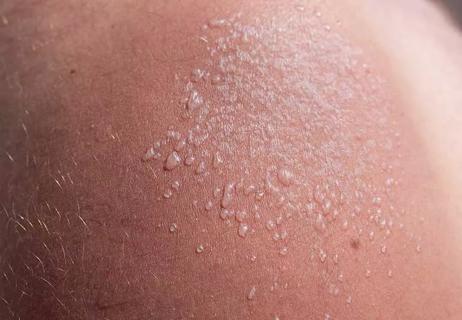
Leaving a severe sunburn untreated can lead to dehydration and heat-related illness
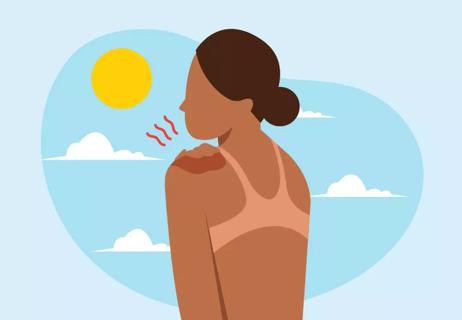
Resist the urge to peel, and treat your healing skin to some much-needed hydration

Soothe your red, burning skin by applying aloe vera, moisturizing and using a cold compress

A sunburn will leave you itchy and red, while sun poisoning can feel like an allergic reaction
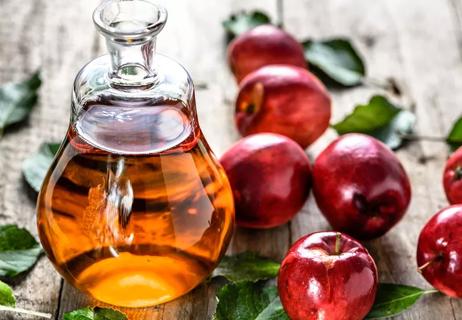
It could help lower blood sugar and suppress your appetite, but don’t believe all the hype
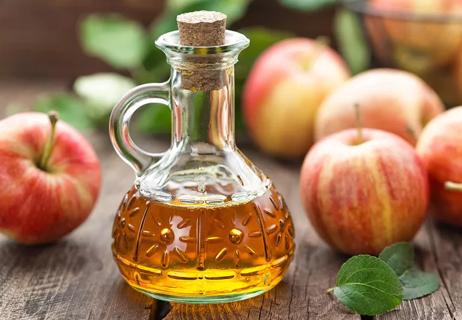
There’s not enough research to know, but it’s OK to try it for most

Type 2 diabetes isn’t inevitable with these dietary changes

Applying a hot or cold compress can help with pain